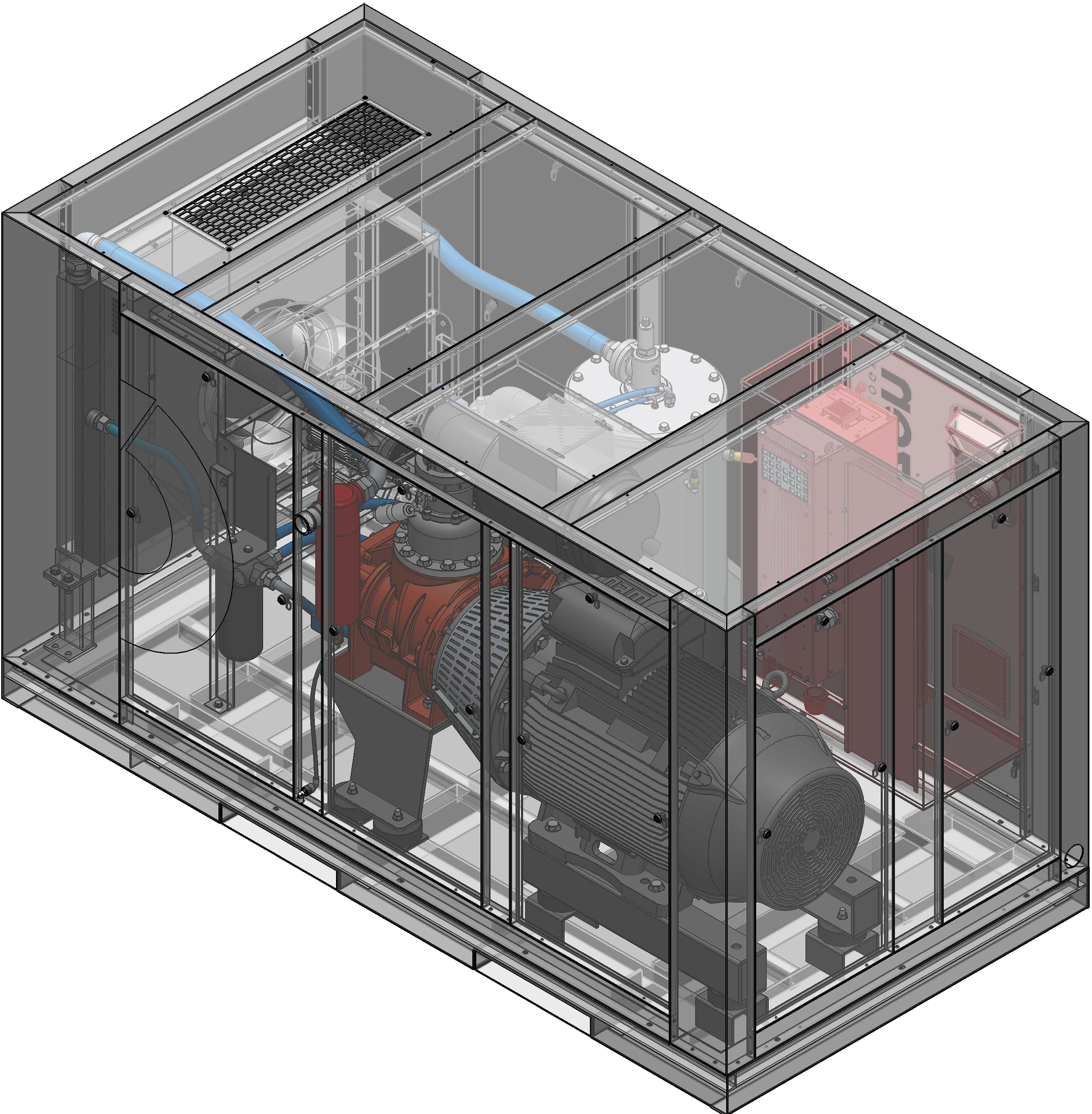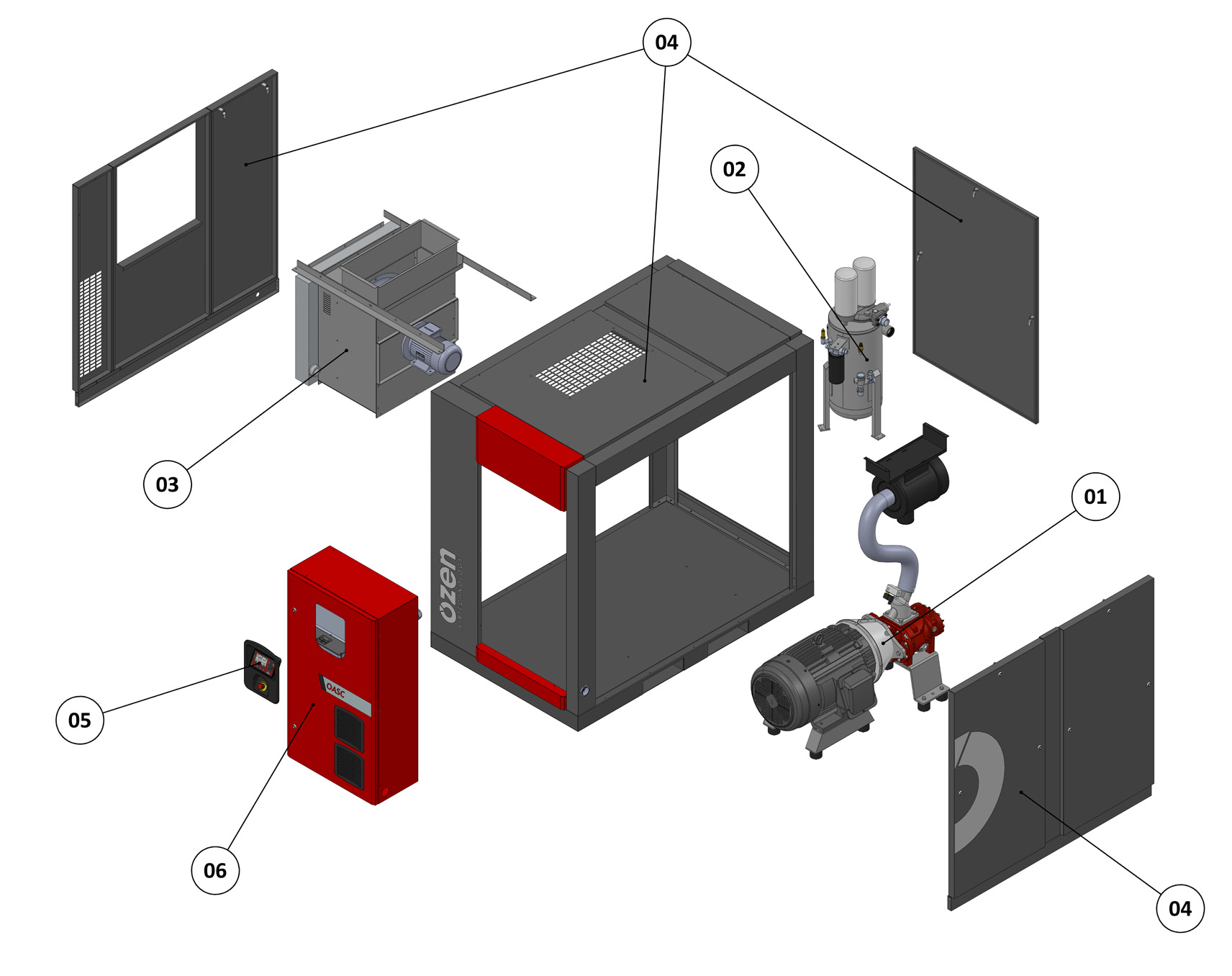How to Choose Correct Screw Compressors?
26 September 2024, Thursday

Fed up with the hassle of finding the perfect screw compressor for your needs? Look no more! This comprehensive guide will walk you through selecting the screw compressor that perfectly suits your unique requirements.
Whether you are an industry professional or just an enthusiast, finding the right screw compressor can be tricky. Given the abundance of options on the market, it is easy to get overwhelmed by the features and technical specifications.
But don’t worry! Tips from our experts will guide you in identifying the essential factors to consider when selecting a screw compressor. Whether it is understanding various types of screw compressors or assessing key features like motor power and tank capacity, this guide will cover all you need to know.
Understanding Different Screw Compressor Types
Screw compressors are a popular type of air compressor that uses interlocking helical screws to intake and compress air. They are available in different configurations, each with its own distinct features and applications. Grasping the types of screw compressors is the initial step in selecting the one that best meets your needs.
One of the most common types is the oil-injected screw compressor. Oil injected into the compression chamber cools the air and seals the rotors. Oil-injected screw compressors are known for their efficiency, minimal maintenance needs, and relatively silent operation, which makes them a common choice for industrial applications like manufacturing, mining, and construction.
Another type of screw compressor is the oil-free screw compressor, which operates without the need for lubrication oil. Instead, these compressors use dry compression, with rotors coated in a special material to reduce friction and wear. Oil-free screw compressors are frequently used in applications where clean, oil-free compressed air is essential, such as in the food and beverage or healthcare industry.
Besides these two main types, there are also variable-speed screw compressors that adjust their output according to air demand, and two-stage screw compressors that employ high-stage compression for increased efficiency. By understanding the characteristics of each screw compressor type, you can narrow down your choices and find the one that best fits your needs.
Considerations When Choosing Screw Compressors
When selecting the ideal screw compressor, several important factors need to be considered. Factors such as air capacity, pressure requirements, energy efficiency, and maintenance needs all play a role in determining the right compressor for you.
A key factor to consider when choosing is the necessary air capacity and pressure. Screw compressors come in various sizes and capacities, from small units for personal or small-scale use to large industrial models that can deliver thousands of cubic meters of air per minute. Properly assessing your air demand in terms of volume and pressure is crucial for choosing the correctly sized compressor that fits your needs and helps prevent energy or resource wastage.

The power and efficiency of the screw compressor is another important factor to consider. Compressors with higher horsepower motors and advanced compression technology can deliver greater output with reduced energy consumption. This can result in substantial cost savings over time. Comparing power ratings and overall efficiency ratings of different models helps ensure you get the best value for your investment.
Maintenance and service needs are key factors to consider when choosing a screw compressor. Some models may require more frequent oil changes or maintenance, while others provide longer intervals between servicing. The availability of spare parts and ease of access to service can also affect the total ownership cost and long-term reliability of the compressor.
Assessing the Required Air Capacity and Pressure
To assess the air capacity and pressure requirements, start by reviewing the tools, equipment, and processes that will use compressed air. List the individual air consumption rates and required pressure levels for various air-operated devices. This data will help you in calculating the total air demand in both volume (cubic feet per minute, or CFM) and pressure (pounds per square inch, or PSI).
When estimating air capacity requirements, be sure to account for any future growth or expansion plans. Adding a buffer of 20-30% to your current needs ensures that the compressor you choose can manage increased demand without any overload. Also, take into account the duty cycle of your operations. If your air usage is intermittent or highly variable, a larger capacity compressor may be necessary to handle peak demands.
With a clear understanding of your required air capacity and pressure, you can begin searching for screw compressors that meet these specifications and narrow down your choices. Compare the performance data of different models, taking into account factors like motor power, compression efficiency, and tank size, to identify the one that best meets your needs.
Tips for Choosing the Right Screw Compressor for Your Specific Needs
Choosing a screw compressor might seem complex and overwhelming, but with the right approach and careful consideration of key factors, you can make a well-informed decision that fits your specific needs. Here are some tips to guide you:
- 1. Clearly determine your air capacity and pressure requirements: Clearly determine the volume (CFM) and pressure (PSI) of compressed air needed for your tools, equipment, and processes. This will be the basis for choosing your compressor.
- 2. Assess the power and efficiency of the compressor: Look for models with high horsepower and advanced compression technology to achieve the best performance and energy efficiency.
- 3. Consider maintenance and service requirements: Prioritize compressors with longer oil change intervals, user-friendly designs, and readily available spare parts to reduce downtime and maintenance costs.
